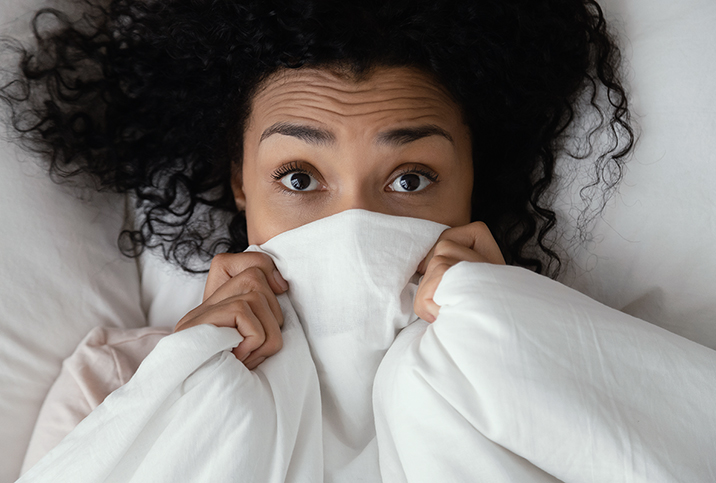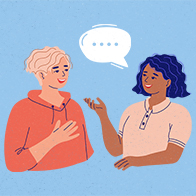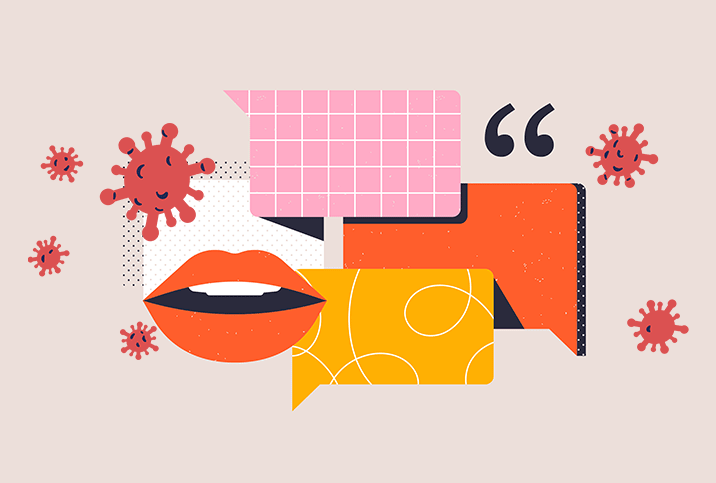Venereophobia: The Irrational Fear of STIs and STDs

Venereophobia is defined as "an exaggerated or irrational fear of contracting venereal disease following isolated or multiple episodes of sexual intercourse," according to a 2017 paper by researchers in India. Essentially, it's the fear and anxiety of catching a sexually transmitted infection (STI) even when taking necessary precautions.
Daniel Fryer, a psychotherapist at the Priory Hospital Bristol in the United Kingdom, said phobias can affect anyone, regardless of age, sex or socioeconomic status. But what exactly causes venereophobia?
How common is venereophobia?
Although there is a marked clinical rise in incidences of venereophobia, Fryer said, there are no official statistics. This is partly because venereophobia is not recognized as a mental health condition by the Diagnostic and Statistical Manual of Mental Disorders, Fifth Edition, Text Revision (DSM-5-TR), and therefore, data about its prevalence is limited, said Afton Kapuscinski, Ph.D., clinic director at the psychological services center at Syracuse University in New York.
She said the addition of venereophobia to DSM-5 would likely be redundant. Fears revolving around having medical conditions are already diagnosed with existing mental health conditions such as illness anxiety disorder (IAD) or obsessive-compulsive disorder (OCD).
"OCD has approximately a 1 percent 12-month prevalence rate, which is relatively low for a mental health disorder," Kapuscinski said. "Rates of IAD are a bit higher, probably around 3 percent."
Fryer said scientists think venereophobia is most common in younger age groups.
"This is likely linked to a higher rate of sexually transmitted infections among those 25 and under," he added.
How venereophobia occurs
Many phobias develop as a result of a negative incident or experience, Fryer explained. They might also originate from a panic attack brought on by a specific object or situation. The trigger for venereophobia is likely to be one or a series of sexual experiences.
"If a sexual experience has led to ill health in the past, it might lead to you developing a mindset that immediately assumes the worst every time you have another sexual experience," Fryer said. "New bodily sensations, or the appearance of something new on your genitalia, will only serve to fuel these worries."
Genetics and environment may also play a role, Fryer noted.
"If a parent has struggled with an anxiety disorder such as a phobia, their children are at increased risk of developing one, too," he said, adding that having a personality to constantly worry can be inherited by children and is a central characteristic of phobias.
Kapuscinski noted that like most mental health conditions, predisposing genetic and biological factors, as well as environmental conditions, likely play a role in who experiences these problems.
"Identical twins are much more likely to both suffer from OCD than fraternal twins, and having a trauma history is a risk factor for both OCD and IAD," she said.
Links to other mental health disorders
Fryer said venereophobia is closely linked with health anxiety, which occurs when people become obsessed with a particular health condition, are convinced they have it and, despite overwhelming evidence to the contrary, refuse to accept that they are actually healthy.
The symptoms of what is referred to as venereophobia involve concerns about having acquired an STI despite a lack of substantial symptoms or corroborating medical findings. The person is intensely anxious about having an STI and tends to seek related information and medical attention repeatedly.
Kapuscinski said this pattern of behavior seems consistent with both IAD and OCD, which involve intrusive, irrational thoughts that create anxiety for the individual, accompanied by compulsive behavior aimed at reducing the intensity of that anxiety.
This pattern of behavior seems consistent with both IAD and OCD, which involve intrusive, irrational thoughts that create anxiety for the individual.
For example, Kapuscinski said someone can check their body several times per day for signs of an STI, seek reassurance from family members and visit numerous physicians regarding their unfounded concerns. Individuals also tend to engage in substantial avoidance of situations that could trigger their intrusive thoughts, such as avoiding close contact with others.
"Unfortunately, the compulsions do not reduce anxiety in the long term but create a vicious cycle of anxiety followed by compulsions that usually make stress worse over time," Kapuscinski explained.
The two disorders have substantial symptom overlap, but OCD tends to be focused on fears of getting an illness in the future and usually includes more than one intrusive thought pattern. With IAD, she noted the individual fears they already have a medical problem.
"In my clinical experience, however, these distinctions are less clear-cut and patients present with fears of both having and acquiring illnesses commonly," Kapuscinski added.
Treatment options
Kapuscinski noted that OCD and IAD are sometimes treated successfully with psychiatric medications, such as antidepressants, and by reducing unnecessary contact with physicians.
"A highly effective psychotherapy option for OCD is called exposure and ritual prevention [ERP], which would be my treatment of choice if an individual presented with irrational concerns about having contracted an STI," Kapuscinski said.
ERP involves gradually exposing the person to situations and stimuli that trigger intrusive thoughts while asking them to refrain from any compulsive behaviors.
"A typical course of treatment would be a few months in length," she added.
Fryer recommended cognitive behavioral therapy (CBT) and rational emotive behavior therapy (REBT), considered the gold standard of treatment for all anxiety disorders, including phobias. These therapies aim to identify irrational or unhelpful thought patterns and establish how they impact our behaviors. Over time, a patient develops a new way of thinking, replacing fears about their phobia with more rational thoughts.
Hypnotherapy also has an excellent evidence-based track record in helping people deal with their phobias, Fryer said.
"[By] accessing your thoughts and beliefs while in a state of relaxation, hypnotherapy uses suggestions to change irrational or unhelpful thoughts and behaviors," he explained.
The incidences of all types of STIs are trending higher, which may be a factor driving higher incidence rates of venereophobia. Giving more care and attention to sexual health is a good thing. However, as with all phobias, Fryer emphasized the line between healthy concern and anxiety, and the even bigger line between a concern and a phobia.




















